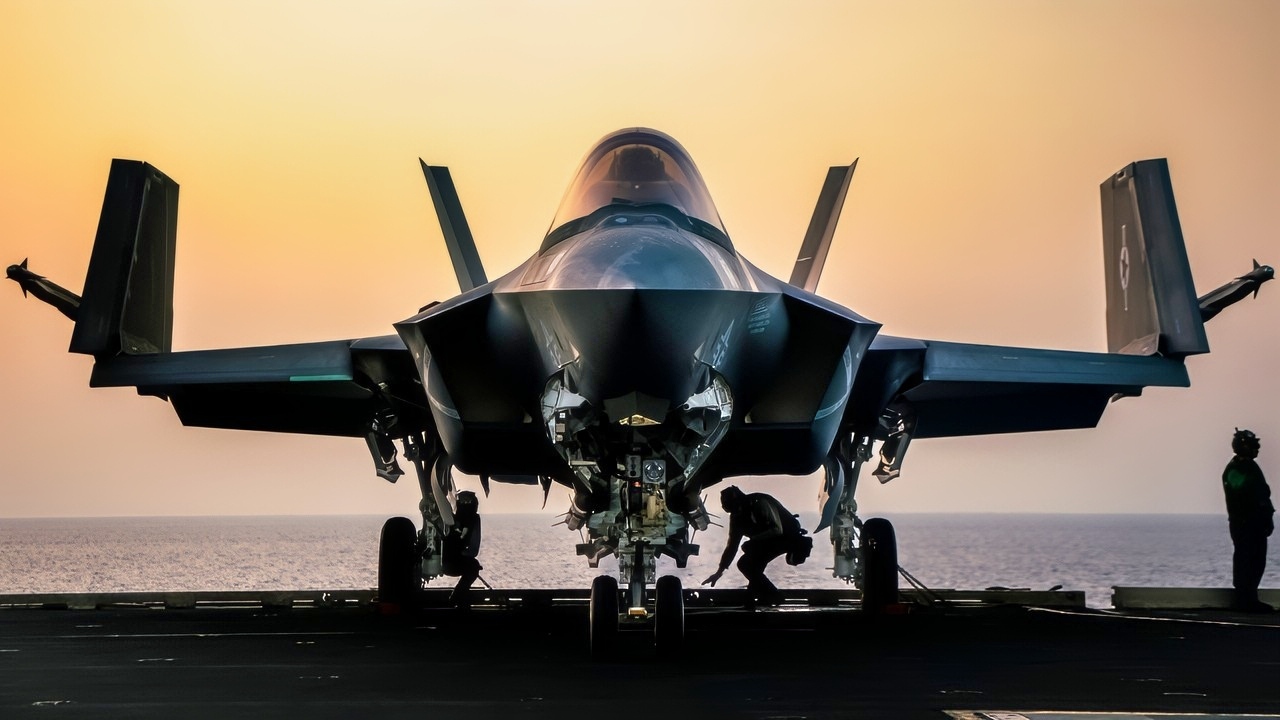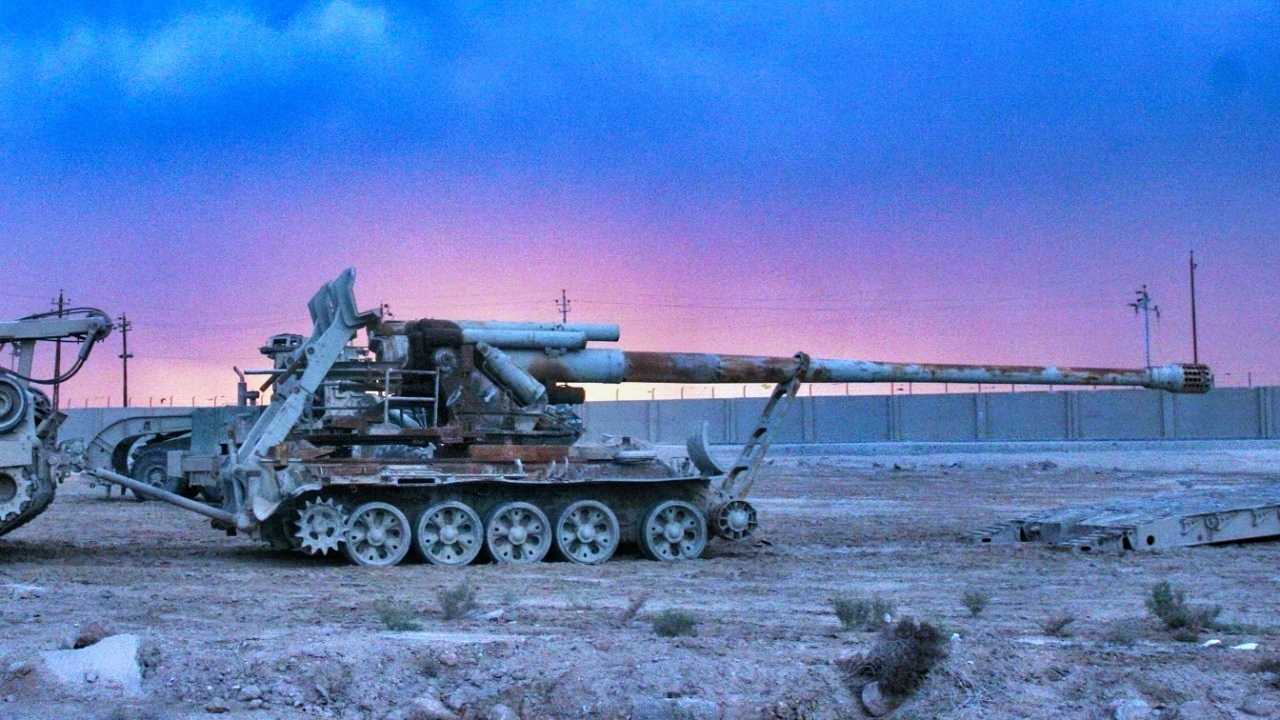Key Points and Summary – Thucydides cast armistices as brief intermissions before tragedy resumes. Could Korea’s 1953 truce be the longest intermission in history—or the prelude to catastrophe? Here’s what North Korea could do:
-A chilling opening: North Korean missile and drone salvos paralyze airbases, ports, grids, and logistics; persistent chemical agents canalize counterattacks; then a “warning” nuclear detonation escalates to tactical strikes.

North Korea Soldiers. Image Credit: KCNA/North Korean State Media.

HWASONG-18 ICBM North Korea. Image Credit: North Korean state media.
-Japan is hit to hobble U.S. power projection; Australia becomes a rear-area hub and target; China and Russia press in at the edges to shape outcomes without igniting general war. Space and cyber become contested, undersea cables are cut, and ports, bridges, and fuel hubs are re-struck.
-Casualties reach into the millions; the global economy seizes. The war ends not with victory but exhaustion—and another ceasefire. Latham’s cautionary tale urges hardened deterrence, tighter alliances, and reliable off-ramps before the curtain falls.
A Korean War Reboot Would Be Horrible
Thucydides framed the Peace of Nicias (421 BCE) as an interlude in the Athenian–Spartan war, an intermission whose brevity the forces of honor, fear, and interest would assuredly see to. By that logic, the renewal of hostilities was not an accident but a near certainty.
At first glance, the Korean Armistice of 1953 seems to disprove him. Nicias, which was to last fifty years, survived only about six; the Korean truce, always understood as a temporary ceasefire in place of a political settlement, has now lasted for more than seven decades. That is the scorecard so far. The question remains, however, of what might happen if Thucydides is right about armistices, and Korea’s is merely a very long intermission before the final act. If so, the outcome would be a tragedy even he did not envision.
An Uneasy Truce Between North Korea and South Korea
Imagine the opening scene: it is 1950 all over again–a surprise attack. North Korean missile and drone salvos are delivered in tightly sequenced waves, overwhelming South Korean defenses before they can recover. Short-range ballistic and cruise missiles are followed by one-way drones striking airbases, ports, fuel farms, missile-defense radars, and logistics depots. Runways crater; hardened-shelter doors and fuel lines rupture; radars blink, recover, and blink again as follow-on salvos hit. Artillery closes highways by smashing interchanges and bridge approaches. Cyber operations poison grid controls: dispatch software misroutes power, breakers stick open, and operators revert to manual switching that cannot keep pace. Freight snarls as rail signaling desynchronizes; ports lose crane telemetry; airport approaches wobble under GPS spoofing. The objective is paralysis, not rubble.
As the offensive stagnates and Allied counter-attacks intensify, Pyongyang escalates: persistent chemical agents are used to slow counter-attacking forces. Fired by tube and rocket artillery and, where possible, dispersed by UAVs along pre-surveyed lines of drift, mustard-type blister agents and persistent nerve agents are applied to river crossings, mountain defiles, rail junctions, and the approaches to key airfields and depots.

M2020 Tank from North Korea. Image Credit: KCNA/North Korea State Media.

North Korean ICBM. Image Credit: KCNA/North Korean State Media.
The objective is operational delay: canalize forces into contaminated lanes, force units into full protective gear, degrade sortie rates, and pin repair crews away from damaged runways, bridges, and fuel farms. Weather and terrain do the rest: low winds trap vapor in cuttings and underpasses; cold nights preserve contamination on roads and equipment. Even with rapid detection and decontamination, the cumulative effect is time—hours stretched into days—buying the regime space to reconstitute launchers, reposition artillery, and harden command sites while keeping escalation below the threshold of indiscriminate destruction.
Pyongyang Keeps Pushing
Regime-survival anxiety heightens as Pyongyang’s offensive definitively falters. Tactical nuclear options long rehearsed are used to mitigate that anxiety: first, a low-yield detonation at sea as a warning shot; if operations continue, an airburst over a military formation, then a ground burst at a major port.
This is not Armageddon, but it is mass death. On the severe end of published ranges, the first month could see 300,000–600,000 fatalities and up to one to two million injuries or illnesses, with totals rising to two to four million over a year if the barrage persists.
Faced with tactical and operational setbacks, Pyongyang opts to expand the strategic scope of the war. It attacks Japan—the hinge of US power projection—in an effort to slow American buildup and pressure Tokyo to stay out of the war.
Ballistic and cruise missiles are fired against the US bases at Kadena, Yokosuka, and Sasebo, and cyberattacks that produce rolling blackouts are unleashed across Japan’s industrial belts. Japanese fatalities reach the tens of thousands, and port throughput is halved as insurers flee and chokepoints clog.
Australia is drawn into the conflict due to its geography and strategic location. As US carriers and heavy bombers step back from the densest threat rings, northern Australian airfields and fuel nodes become the resilient rear for strike and intelligence, surveillance, and reconnaissance.

U.S CENTRAL COMMAND AREA OF RESPONSIBILITY (April 24, 2025) U.S. Sailors conduct pre-flight safety checks on an F-35C Lightning II, attached to Strike Fighter Squadron (VFA) 97, on the flight deck of the Nimitz-class aircraft carrier USS Carl Vinson (CVN 70) in the U.S. Central Command area of responsibility. (Official U.S. Navy photo)
Maritime surveillance from the continent closes gaps across the archipelagos; munitions and spares flow forward from factories and stockpiles. Those roles make Australia a target—harassment at long range when feasible; cyber and sabotage when missiles will not reach. Losses are far lower than those in Korea or Japan, but still amount to thousands of dollars over months, alongside disruptions to defense logistics, mining exports, and the cable hubs linking Australia to Asia and the United States.
Great Power Presence
Great-power moves tighten the vise. To manage escalation risk near its border and shape possible negotiations, China conducts stability patrols, hardens border crossings, surges nearby maritime and air presence, and offers ceasefire language that preserves North Korean leverage while positioning PLA assets to complicate allied strike profiles—close enough to matter, yet shy of first shots. Russia supplies munitions and technical assistance through gray channels, trades diplomatic cover for leverage, and harvests targeting lessons.
Neither seeks general war with the United States; both exploit a crisis that bleeds American bandwidth. Friction multiplies: risky intercepts in crowded corridors, laser dazzling of ISR aircraft, and cyber operations that spill into civilian grids. Each episode is a coin flip between de-escalation and a second front.
Infrastructure becomes the battlefield. Bridges over the Han and Nakdong are re-struck as repairs begin. Rail chokepoints are cratered by routine; port cranes twist on quays; dry docks burn. LNG terminals and fuel farms often explode or shut down despite repeated warnings; desalination and wastewater plants operate under conditions of darkness and smoke instead of daylight and fresh air. Undersea cables are “accidentally” severed; repairs take weeks under escort.
In orbit, Chinese and Russian antisatellite attacks and co-orbital harassment create debris that degrades weather, communications, and intelligence, surveillance, and reconnaissance (ISR)—enough to hamper precision targeting and military communication, but also with catastrophic effects on civilian life.
The casualty ledger reveals the scale of the metastasizing war. Beyond the peninsula’s two-to-four million total casualties, Japan adds tens of thousands dead and hundreds of thousands injured or displaced. US losses include thousands of service members and hundreds of civilians from successful strikes on forward bases and maritime targets, with Guam and Okinawa bearing the brunt. Australia suffers hundreds to a few thousand killed and wounded from sporadic strikes, cyber-induced accidents, and operations under a relentless tempo. China and Russia count losses from accidents, border incidents, and ISR clashes—low by comparison but politically costly.
The Broader Wreckage from North Korea’s Attack
The economic wreckage compounds the human one. Semiconductors, batteries, and specialty chemicals lock up; shipbuilding schedules collapse; aviation maintenance burns through spares that cannot be quickly replaced; energy and insurance shocks drive inflation; famine risk rises in import-dependent states as shipping reroutes and quarantines stack delay upon delay.
Cleanup on the peninsula—decontaminating soils and water tables, remediating ports, replacing bridges and rail—costs trillions and takes decades.
The war ends not in triumph but in terror and exhaustion – with the geopolitical map at war’s end not much different from the day before Pyongyang’s attack.
Perhaps ironically, but certainly tragically, the war ends with a ceasefire that is agreed before escalation to full nuclear Armageddon. But not before unleashing devastation unparalleled since World War II.
In Thucydides’ world, tragedy served as a civic instrument, a cautionary tale that compelled citizens to confront the chain from choice to consequence. If the calamity sketched here functions in this way—if it prompts policymakers and the public to harden deterrence, discipline alliances, and keep channels for de-escalation open—then the lesson will have done its work.
In that case, Thucydides may yet be proved right: Korea’s Peace of Nicias may be less an intermission than a decisive curtain-fall.
About the Author: Dr. Andrew Latham
Andrew Latham is a Senior Washington Fellow with the Institute for Peace and Diplomacy, a non-resident fellow at Defense Priorities, and a professor of international relations and political theory at Macalester College in Saint Paul, MN. You can follow him on X: @aakatham. He writes a daily column for the National Security Journal.
More Military
Russia’s ‘New’ Su-75 Checkmate Stealth Fighter Could Soon Be In the Air
China’s New Aircraft Carriers Have 1 Big Advantage over the U.S. Navy
Russia’s Airspace Provocations Are a Tell — And a Weakness
USS Parche: A U.S. Navy Nuclear Spy Submarine That Had Its Own Self-Destruct Mode
How a ‘Cheap and Tiny’ Submarine ‘Sank’ a $4,500,000,000 Nuclear Navy Aircraft Carrier










